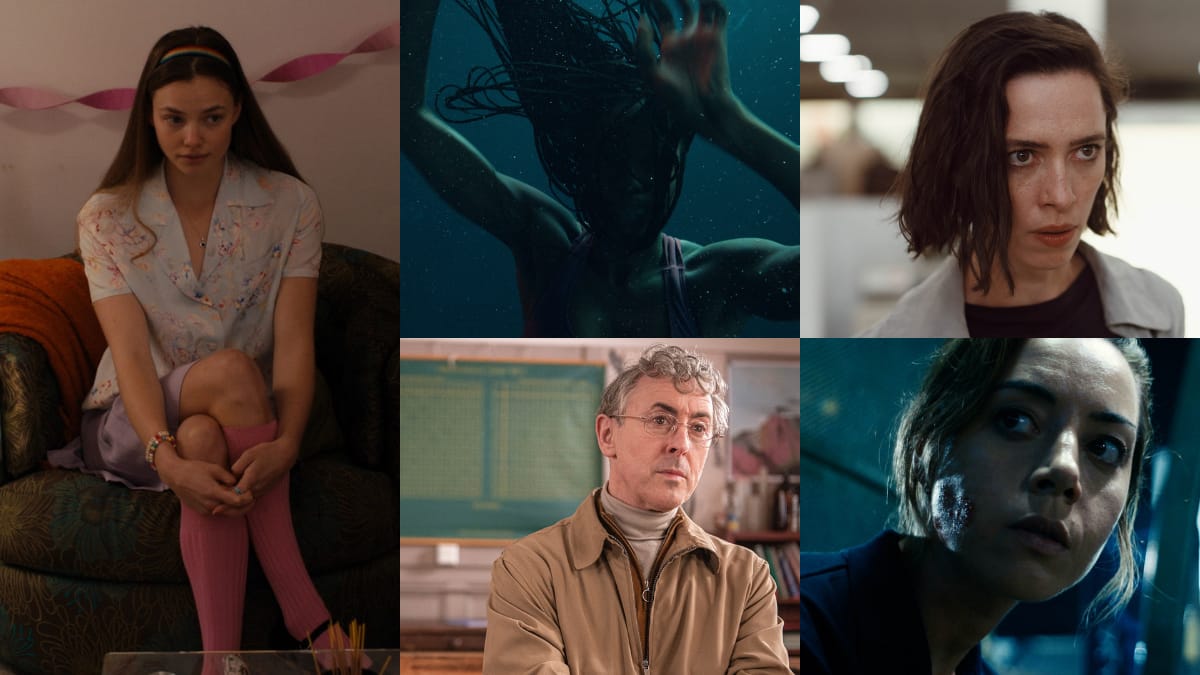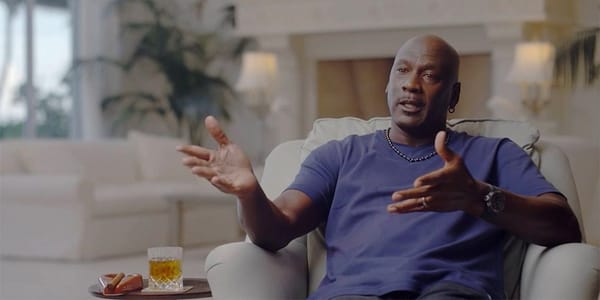What’s the use?

A few films at the 2022 Sundance Film Festival ran against the dominant idea of a utilitarian, simplistic cinema
Making films anywhere is difficult and expensive, and in any given year — though perhaps now more than ever, two years into a pandemic — the selection at the Sundance Film Festival shows a tension between the virtues of economic limitations on the one hand, and its discontents on the other. This scarcity, this need to make do with little, appears to have translated in the case of independent American cinema into a now almost proudly utilitarian, pragmatic approach to filmmaking, and by extension to film watching and even film reviewing.
When Variety film critic Guy Lodge pointed out on Twitter how odd it is for a relatively major festival such as Sundance to still feature separate competitions for American films and the rest of the world, some users did not hesitate to reply that this was because it was already hard enough for American indies to be noticed, let alone sold — completely ignoring the fact that it is immeasurably more difficult for international films. But Sundance has for a few years now been known more as a terrain for lucrative deals for American indies, where a lucky few are acquired by American distributors for astronomical sums, than as a place for discovery — the Sundance-premiere-to-streaming-platform pipeline is well established.
However, the online format that the festival has been forced to adopt these past two editions due to the pandemic has revealed (and perhaps even encouraged) casual viewers and reviewers alike to lean into the same utilitarian instincts. One accredited viewer shamelessly tweeted about fast-forwarding through a film they found unpleasant (why not just stop watching it?). A critic admitted fast forwarding to the end of a film because they weren’t enjoying it and because said film already had enough of a positive buzz. These are just two examples, but who knows how many other viewers did the same thing — only kept watching when they decided it was useful for them to do so?
In that context, some of the most exhilarating films at the festival were those that moved away from the pragmatic, the useful, and the logical. Lena Dunham’s Sharp Stick was refreshing not just in how fearlessly it brushed up against topics that most directors (and viewers!), afraid of getting bogged down in moral and logical impasses, would rather leave alone. The film, centred on a very naive infertile young woman who decides to finally experience sex, proves once again that there are no taboo subjects if one knows how to handle them. But even more exciting is how Dunham does not feel obliged to reassure her audience at every turn that she, too, knows how risky this whole journey is. Her film betrays no concern for how it might appear — it instead leaves it up to the audience to choose to stick by her side or not, and lets them handle this now all too rare feeling of total uncertainty on their own.
The Scottish documentary My Old School similarly let viewers sit with their own conflicted feelings. Though it has all the trappings and sheen of a conventional doc, with talking head interviews, animated sequences, and a fun formal conceit at its centre — Alan Cumming lip syncing to the words of the unseen, mysterious central protagonist — My Old School has not had all its personality, humour and hard edges smoothed out of it, the way they often are in other highly processed docs. Perhaps because director Jono McLeod was himself a student at Bearsden Academy secondary school in 1993 Glasgow, when the ominously named new pupil Brandon Lee enrolled, McLeod’s film about the events that then unfolded is not affected by the urge to offer a neat, comforting summary of the whole affair. He does not deny the abuse of trust and innocence that took place, but neither does he want to erase the very real joy that Lee brought him and his peers at the time, and which carried some of them into an adult life that would have been a lot less bright were it not for him. This makes for a texturally rich, genuinely thrilling and often incredibly uncomfortable doc that shows reckoning with the past as an infinitely nuanced and complex process, one that can be fun, harrowing and bittersweet.
Andrew Semans’ Resurrection likewise eschewed all hand-holding and let us stumble forward into its creepy universe like big boys and girls. The film makes an extremely bold — not to say ‘fucked up’ — promise early on, and the basic curiosity to find out whether it will actually dare to go there is part of what sustains our interest. But more than suspense alone, much of what keeps us watching in the meantime is the urge to gather clues not so much about what is happening, but about what register the film is actually evolving in, hoping this might help determine just how crazy things will get. Semans is in fact particularly careful not to conceal anything from us about what is taking place: Margaret (Rebecca Hall) is panicked to see David (Tim Roth) re-enter her life, and in the hope that he will leave her and her daughter alone, she does all the strange “kindnesses” he asks for, very public and visible punishing tasks such as walking to work barefoot or holding stress positions in a park. The dialogue, cinematography and set design are likewise all disturbingly straightforward. Even Rebecca Hall’s performance is forceful and no-nonsense, as if to make clear that everything she says or does, no matter how odd or ridiculous, is to be taken very seriously. It’s an invigorating film that offers a much needed reminder of how ‘storytelling’ — a term endlessly and carelessly thrown around at Sundance — does not have to be only a means to an end (changing the world, showing new perspectives, etc) but can also be enjoyed for its own sake.
Though much more traditional, Nikyatu Jusu’s gorgeous film Nanny similarly showed a real understanding of the beauty and value in a kind of storytelling that isn’t solely concerned with making some big points. Jusu demonstrates an unusually nuanced understanding of the different registers and tones that make up any existence, but particularly that of her protagonist Aisha (the brilliant Anna Diop), an undocumented Senegalese immigrant babysitting the daughter of a rich New York family. Watching how, with every scene and every encounter, the film moved away from being a black-and-white parable about racism of the kind this premise (and this festival) would lead us to expect was thrilling, even moving. Aisha, as well as every other character in the film, turned out to be a fully rounded individual who could laugh, cry, flirt, and be angry or sad, without the film ever fetishising her, The Big Apple, or even her meet-cutes with several potential partners. It was therefore a bit of a shame that the film also included horror sequences — Senegalese fairytales come to life — whose narrative purpose felt a lot more straightforward. That these visions would appear without warning was part of their point, but they felt neither earned nor necessary, as Aisha, her conflicting emotions over not being with her young son in Senegal, and her world in New York were reason enough to keep watching.
In John Patton Ford’s Emily the Criminal, by contrast, bursts of violence were precisely what kept the film going. In the most perfect feat of casting I saw at the festival, Aubrey Plaza plays Emily, an angry young woman who has long lost faith in and patience for the system: she studied to be an artist, but no one wants to pay for art; now she is trying to pay her student debt, but cannot get anything better than a delivery gig due to a minor criminal record; she jumps through hoops for a job interview, only to realise it is for an unpaid internship. If she followed the rules, the film could end at any one of the many roadblocks she encounters. The reason it does not is that Emily decides to bulldoze through them all, going against common sense and expectations to follow the ‘might is right’ logic that she knows all too well is the real mechanism of capitalism. In a scene where, working as a “dummy shopper” for professional crook Youcef (Theo Rossi), she tries to buy an expensive car with a stolen credit card, she does not back down once the sellers suspect fraud — instead she drives off, with the angry men hot on her tail. Though every one of her choices makes sense, they are always a gamble: Emily has never done this before, and there is no way to know if she will make it. Unlike many films at the festival which similarly explored current societal issues, the ending of Emily the Criminal does not feel like a foregone conclusion. It is ironic that a film centred on a woman (a once would-be artist!) who pushes cold-blooded pragmatism to the extreme, with sinister consequences, should be one of the best to premiere at a festival so nakedly invested in a utilitarian idea of cinema — but where sparks of creativity and surprise can still be found.




